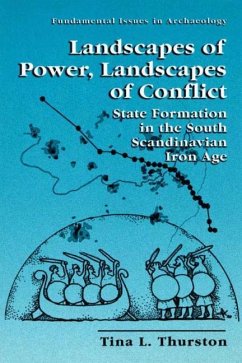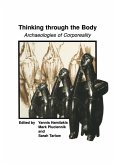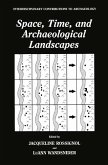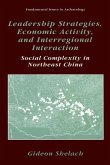Tina Thurston's Landscapes of Power; Landscapes of Conflict is a thi- generation processual analysis of sociopolitical evolution during the Iron Age in southern Scandinavia. Several red flags seem to be raised at once. Are not archaeologists now postprocessual, using new interpretive approaches to - derstand human history? Is not evolution a discredited concept in which - cieties are arbitrarily arranged along a unilinear scheme? Should not modern approaches be profoundly historical and agent-centered? In any event, were not Scandinavians the ultimate barbarian Vikings parasitizing the complex civilized world of southern and central Europe? Tina Thurston's book focuses our attention on the significant innovations of anthropological archaeology at the end of the twentieth century. A brief overview of processual archaeology can set the context for - preciating Landscapes ofPower; Landscapes of Conflict. During the 1960s the emergent processual archaeology (a. k. a. the New Archaeology) cryst- lized an evolutionary paradigm that framed research with the comparative ethnography of Service and Fried. It was thought that human societies p- gressed through stages of social development and that the goal was to d- cover the evolutionary prime movers (such as irrigation, warfare, trade, and population) that drove social and cultural change. By the 1970s prime movers had fallen from favor and social evolution was conceived as complicated flows of causation involving many variables.
`...most innovative book-length treatment...provides one of the best current examples of the value of the sort of landscape-focused syncretism of processual and postprocessual approaches. ...clearly and effectively written, the illustrations are excellent and the bibliography is particularly valuable for those wanting more on recent Scandinavian archaeology. ...I would urge all interested in state formation, chiefly societies, and the interaction of archaeology and history to read the whole book. This is an important work, required reading for area specialists, and a provocative model for researchers elsewhere.'
American Anthropologist, 104:4 (2002)
American Anthropologist, 104:4 (2002)
`...most innovative book-length treatment...provides one of the best current examples of the value of the sort of landscape-focused syncretism of processual and postprocessual approaches. ...clearly and effectively written, the illustrations are excellent and the bibliography is particularly valuable for those wanting more on recent Scandinavian archaeology. ...I would urge all interested in state formation, chiefly societies, and the interaction of archaeology and history to read the whole book. This is an important work, required reading for area specialists, and a provocative model for researchers elsewhere.'
American Anthropologist, 104:4 (2002)
American Anthropologist, 104:4 (2002)








